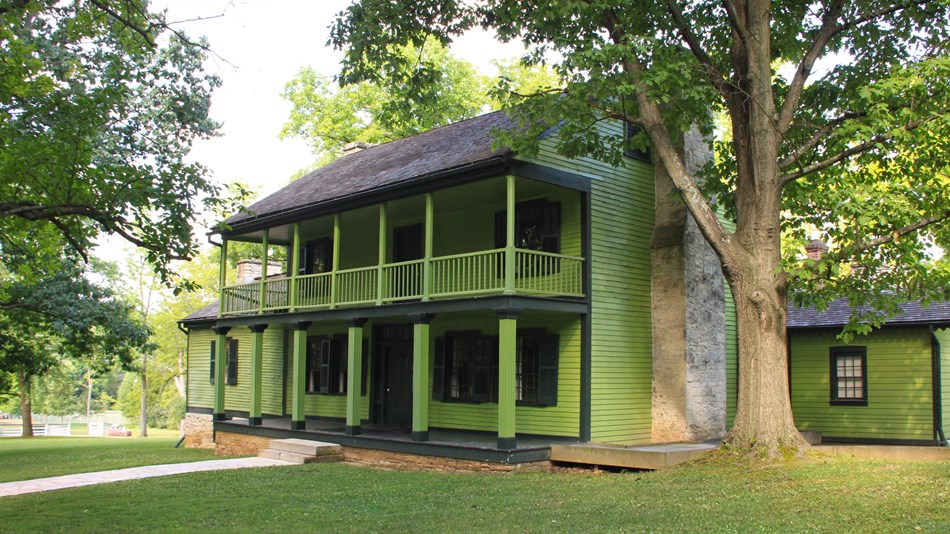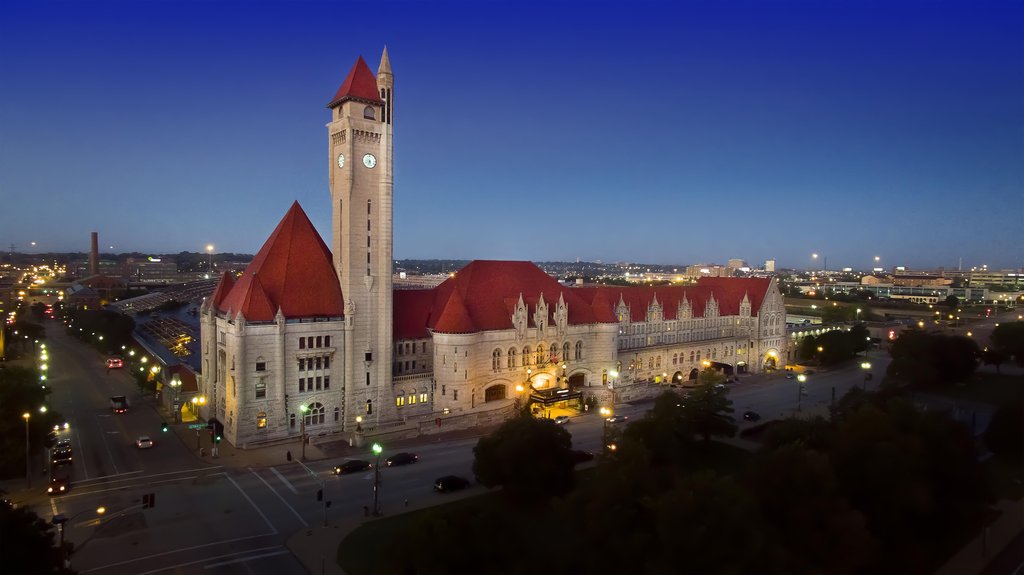“I shall return.”
Echoing General MacArthur’s famous WW II quote or my promise to that pile of empty beer bottles, I said the same about St. Louis, MO in 2017. Only scratching the surface then for sampling the city’s impressive (and mainly free) collection of sights and attractions, my wife and I wanted a travel mulligan due to the status of the Gateway Arch, the majestic symbol of St. Louis. Its tram ride to the top as well as its museum were closed at that time due to a massive $380 million renovation project. So when we learned the tram ride and most of the renovations would be opened and completed by early March of this year, we immediately booked a return visit. Glad we did.
And besides, an advance scouting trip was in order with the PGA Championship being held in nearby Bellerive Country Club on Aug. 9-12.
Before indulging in a sidebar about Gateway Arch and other St. Louis diversions, let me digress about Bellerive and the PGA.
Unlike my esteemed colleague Jack Berry I didn’t cover the 1965 U.S. Open at Bellerive when Gary Player won and completed a career Grand Slam. Instead, I watched it on television as a hopelessly addicted to golf teenager. What I remember most about that Open were two things: 1) the trademark black shirt and black pants worn by Player—who said he wore black because the color absorbed the heat of the sun and made him “feel stronger;” and 2) that Player donated his $25,000 in winnings to charity—$5000 to cancer research (his mother died of cancer) and $20,000 to the USGA to promote junior golf (that’s me!).
Though impressed with Player’s heartfelt generosity, I thought it must’ve been the result of heat stroke due to his Daffy Duck preference of wearing black in the blazing hot sun. Later, I learned Player wore that same black shirt all four rounds, washing it in his hotel room each night! And he also played with black fiberglass shafts in his clubs.
Well, at least he wore a white cap.
Another interesting factoid about “the wee South African” and fitness buff was how cagey Player played Bellerive’s difficult 195-yard par-three 6th hole, guarded by a pond in the front and right side of the green. According to writer T.J. Auclair of PGA.com, a Bellerive caddie told him last month that Player “hit his tee shot into the front left bunker in all four rounds… on purpose. Player admitted that was the play so not to mess with the water. And it was a smart play too. At that Open, the hole played to a stroke average of 4.03 — more than a stroke over par.”
If the anecdote is true, it brings to mind Ben Hogan’s famous tactic in playing Augusta National’s 11th hole during the Masters—always playing it right of the green to avoid the fronting pond left. Better a chip or a pitch than a rinsed ball.
In 1965, Bellerive was a new course, designed by Robert Trent Jones, and opened only six years prior. In fact, it was the youngest course ever to host the Open. As the late author and former editor of the USGA’s Golf Journal Robert Sommers stated in his seminal “The U.S. Open,” Bellerive “wasn’t ready for anything so important as the Open.” According to Sommers, “Some areas were still raw, and at least one fairway rippled like a washboard with grass that had not yet knitted closely.” But it was a stern test, stretching out to then gargantuan 7,191 yards and with six par-4 holes over 450 yards. Player and Australian Kel Nagle tied at the end of regulation at two-over par 282 and then Player beat Nagle the next day in the playoff 71 to 74. Player became the first foreign champion since Englishman Ted Ray in 1920.
Two final notes about the 1965 U.S. Open: 1) It was the first time the Open was contested over four consecutive days, ending the tradition of a 36-hole finish on Saturday. The previous year, Ken Venturi somehow prevailed over heat exhaustion during the grueling final two rounds and won at Congressional; 2) It was first time the Open broadcast was televised in color.
But I only remember Player wearing black.
Befitting the 100th anniversary of the PGA, Bellerive will be an ideal venue for the championship. Over the last dozen years, the course has twice undergone improvements and modifications in tree removal, lake construction on #2, bunkering, enhanced vistas and sight-lines and more, all overseen by architect Rees Jones, son of Robert Trent. True to its original design, holes #14 to #17—called the Ridge—will be especially demanding and into a prevailing wind. And #18, a par 4 at 462 yards, remains a fierce closing hole for this last major championship of the year.
Expect heartbreak and triumph surrounding it on Sunday.
***************************************************************************************************
Seeing and doing in St. Louis, Part 2
Gateway Arch: With renovations now completed, the Arch—officially named the Jefferson National Expansion Memorial and part of the National Park System—is a bucket list stop for any traveler to St Louis. The improvements now better connect the Arch to the rest of downtown and to the riverfront. Beneath the Arch is a revamped and improved museum and theater that serves as a perfect prelude to taking the tram ride to the top of the 630-foot Arch, designed by the late Bloomfield Hills (Mich.) native Eero Saarinen. The powerful simplicity of Saarinen’s design is timeless and enduring. It remains the nation’s tallest monument. On a clear day, well, you get the idea…
The Old Courthouse: Just a short walk from the Arch, is the historic Old Courthouse, one of St. Louis’s most prominent architectural landmarks. Most importantly, it was the site of the original lawsuit filed in 1846 by Dred Scott and his wife Harriet where they sued for and were granted their freedom from slavery. In 1857, the U.S. Supreme Count decided that slaves were property and had no right to sue. It was a pivotal and notorious case that accelerated events leading up to the Civil War. The short film in the exhibit area is very worthwhile.
Ulysses S. Grant National Historic Site: Ever since I read Ronald C. White’s riveting biography of Grant a few years, I’ve been fascinated by the life of the Civil War hero and the two-term President. This 10-acre site, again part of the National Park system, preserves the residence and working farm, called White Haven, of Grant’s in-laws and later Grant and his family. It includes a visitor center with theater, exhibits, and gift area. On the grounds, several historic structures depict various interpretive exhibits, shedding light and insight on the times. For our visit, we took advantage of an excellent interpretive tour given by Park Ranger David Newman. A natural storyteller, Newman animated the exhibits and historical buildings with compelling background and reference points. In fact, he also told us he’s met White several times when the author has given lectures at the site. If you love history, especially Presidential history, schedule a visit here located in south St. Louis County, only 12 miles from the Arch.
Union Station: Needing a good walk after lunch and on a pleasant spring day, we made our way to this National Historic Landmark. It was designed by the prominent architect Theodore Link in 1894 and was, at the time, the busiest train terminal in the country. No building of this size and opulence better depicts the stature of St. Louis when it truly was the gateway to the West. It ably handled the teeming rail traffic for the World’s Fair in 1904. Today, it’s wonderfully restored and boasts a sumptuous Grand Hall with a 65-foot barrel vaulted ceiling. There’s also a 539-room in-station hotel that offers modern amenities while honoring the halcyon days of train travel. One slogan said it best: Discover History—the Grandest Station in the Nation. One more thing: A new 75,000 sq. foot-St. Louis Aquarium is on the near horizon and will anchor the revitalized Union Station development.
Campbell House Museum: Only a 10-minute walk from Union Station is this residential gem of St. Louis’s Gilded Age. Built in 1851, the house was the home of Virginia and Robert Campbell who made his fortune beginning in the fur trade and later the mercantile business, banking and real estate. In short, big money, prominent citizen. The Campbells would have 13 children all of whom led interesting and eccentric lives. Today, the home is a meticulously restored time capsule of the late 19th century. It’s on the National Register of Historic Places. Admission includes a guided tour by a knowledgeable docent and free parking is available in the lot adjacent to the Museum. It may sound snoozy to some but it’s not, given its rich history, collections and furnishings. And yes, U.S. Grant was a frequent honored guest at the Campbell house.
Other: The Forest Park area is home to the city’s top cultural assets like the Art Museum, the St. Louis Zoo, the Missouri History Museum, and three 9-hole public golf courses—all on the site of the 1904 World’s Fair; Baseball fans should visit the St. Louis Cardinals Hall of Fame and Museum, even on non-game day, in the bustling Cardinal Ballpark Village.
Where to Stay: On our previous visit, we stayed in the Central West End area near Forest Park, but this time we opted for a downtown location. Drury Inn & Suites St. Louis Convention Center exceeded all of expectations for service, comfort and convenience. We especially liked the free hot breakfast as well as the free Kickback amenity when free hot food and drinks are served daily from 5:30-7 pm. For getting around, we used a new pilot program offering free e-cab service in the downtown area.
Come to think of it, this unique transportation program summed up what we liked about St. Louis and its attractions: electric, eclectic, and free!
Bring on the PGA Championship!
For more information, visit www.explorestlouis.com
Images courtesy of the PGA, USGA, National Park Service, ExploreSt.Louis and Union Station





